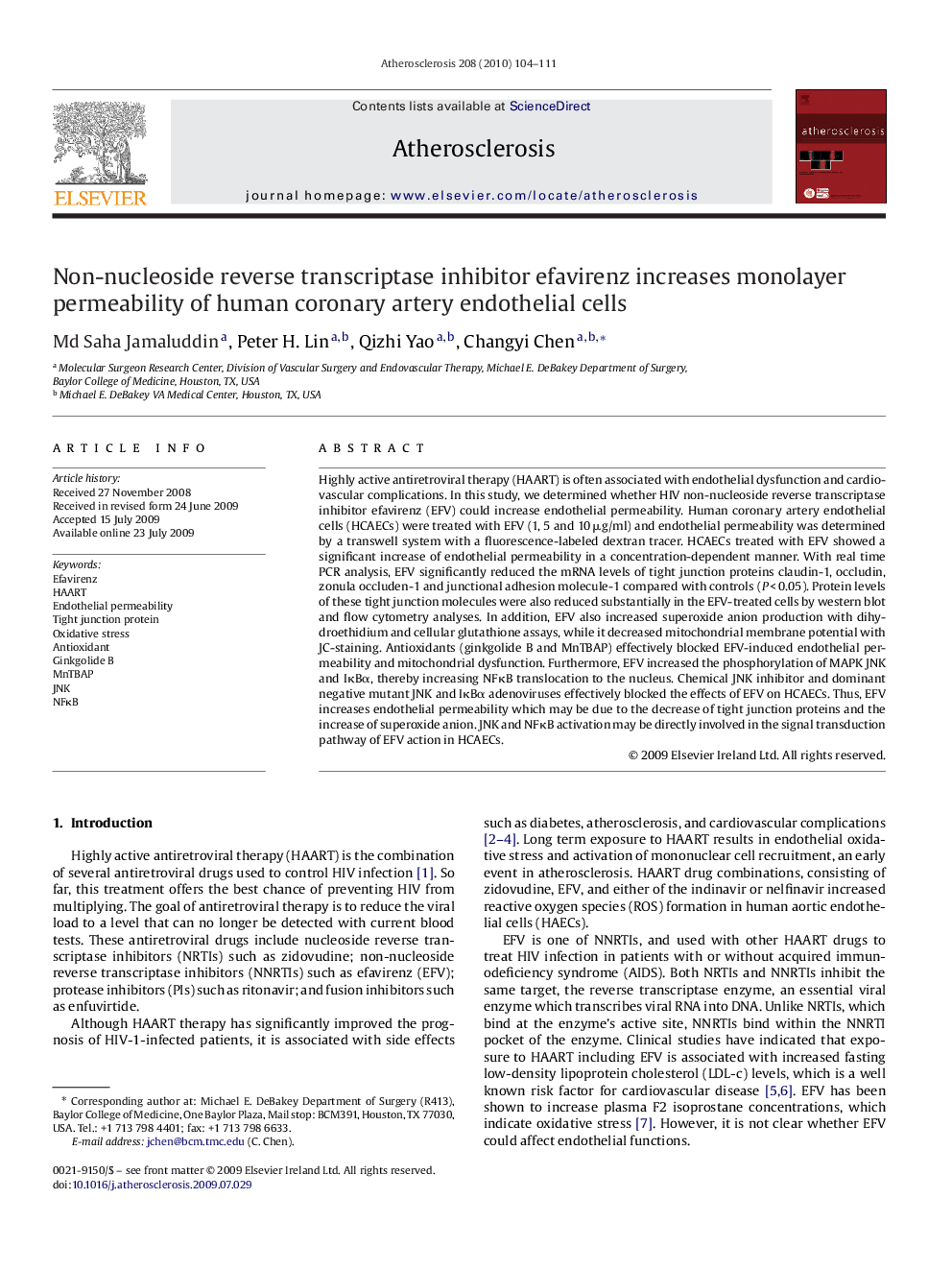| کد مقاله | کد نشریه | سال انتشار | مقاله انگلیسی | نسخه تمام متن |
|---|---|---|---|---|
| 2893668 | 1172418 | 2010 | 8 صفحه PDF | دانلود رایگان |
عنوان انگلیسی مقاله ISI
Non-nucleoside reverse transcriptase inhibitor efavirenz increases monolayer permeability of human coronary artery endothelial cells
دانلود مقاله + سفارش ترجمه
دانلود مقاله ISI انگلیسی
رایگان برای ایرانیان
کلمات کلیدی
موضوعات مرتبط
علوم پزشکی و سلامت
پزشکی و دندانپزشکی
کاردیولوژی و پزشکی قلب و عروق
پیش نمایش صفحه اول مقاله

چکیده انگلیسی
Highly active antiretroviral therapy (HAART) is often associated with endothelial dysfunction and cardiovascular complications. In this study, we determined whether HIV non-nucleoside reverse transcriptase inhibitor efavirenz (EFV) could increase endothelial permeability. Human coronary artery endothelial cells (HCAECs) were treated with EFV (1, 5 and 10 μg/ml) and endothelial permeability was determined by a transwell system with a fluorescence-labeled dextran tracer. HCAECs treated with EFV showed a significant increase of endothelial permeability in a concentration-dependent manner. With real time PCR analysis, EFV significantly reduced the mRNA levels of tight junction proteins claudin-1, occludin, zonula occluden-1 and junctional adhesion molecule-1 compared with controls (P < 0.05). Protein levels of these tight junction molecules were also reduced substantially in the EFV-treated cells by western blot and flow cytometry analyses. In addition, EFV also increased superoxide anion production with dihydroethidium and cellular glutathione assays, while it decreased mitochondrial membrane potential with JC-staining. Antioxidants (ginkgolide B and MnTBAP) effectively blocked EFV-induced endothelial permeability and mitochondrial dysfunction. Furthermore, EFV increased the phosphorylation of MAPK JNK and IκBα, thereby increasing NFκB translocation to the nucleus. Chemical JNK inhibitor and dominant negative mutant JNK and IκBα adenoviruses effectively blocked the effects of EFV on HCAECs. Thus, EFV increases endothelial permeability which may be due to the decrease of tight junction proteins and the increase of superoxide anion. JNK and NFκB activation may be directly involved in the signal transduction pathway of EFV action in HCAECs.
ناشر
Database: Elsevier - ScienceDirect (ساینس دایرکت)
Journal: Atherosclerosis - Volume 208, Issue 1, January 2010, Pages 104-111
Journal: Atherosclerosis - Volume 208, Issue 1, January 2010, Pages 104-111
نویسندگان
Md Saha Jamaluddin, Peter H. Lin, Qizhi Yao, Changyi Chen,